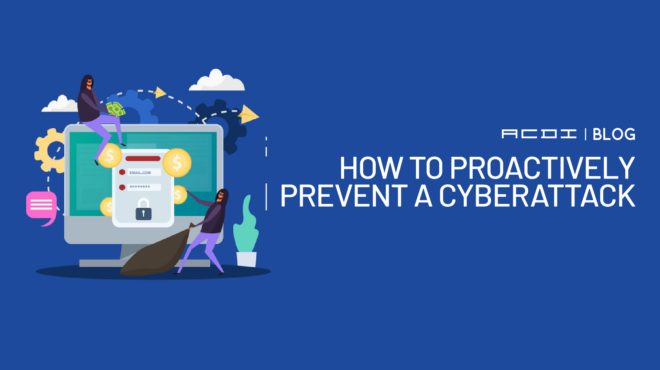Cybersecurity is always on an IT admin’s radar. However, Cyber vulnerability is at an all-time high. Your organization likely has some critical pieces in place to ensure that you are protected, like firewalls and antivirus. Still, there’s so much more that can make the difference between total disaster or just a small incident. We’ll discuss the statistics of cyberattacks, the most common attacks, their consequences, and the best ways to prevent them.
Statistics:
According to the 2019 Data Breach Investigations Report:
- 94% of malware was delivered through email
- 34% of data breaches that occurred were due to insiders
- 22% of data breaches included social attacks
- 17% of data breaches involved malware
- 8% of data breaches were due to misuse by authorized users
- 60% of data breaches among small businesses were due to a negligent employee
Types of Cyberattacks:
- Social Engineering Attacks – Ex: Phishing Emails – an attempt to obtain sensitive information such as usernames and passwords, credit card details, social security numbers, or other sensitive data. Phishing emails are also used to encourage victims to download malware.
- Malware Attacks – The most common type of cyber-attack uses malicious software designed to cause damage a computer, server, client, or computer network. Examples include ransomware, which blocks access to the victim’s files or data in demand for a ransom, and trojans can potentially crash a device or expose personal data.
- Denial-of-service attacks – A Denial-of-Service (DoS) attack is meant to shut down a machine or network, making it inaccessible to its intended users. DoS attacks accomplish this by flooding the target with traffic or sending it information that triggers a crash. These attacks are difficult to identify.
Consequences of Cyberattacks:
- Infrastructure breakdowns – Damaged networks, reduction in performance of systems and equipment, disrupted operations.
- Data Breaches of personal information – Identity theft, additional targeted attacks, damaged brands, psychological impacts, and legal ramifications are examples of the fallout from data breaches.
- Financial Implications – Loss of data, loss of productivity to restore compromised systems, ransoms paid, reduced credit standing, and loss of customer loyalty due to lack of trust in security are just a few of the financial implications of cyberattacks.
How to Prevent Cyberattacks:
- Restrict administrative access to limited individuals – This limits users’ ability to download potentially compromised items to a device or network.
- Train Users – How to recognize cybersecurity threats like phishing emails
- Back up Data – Make sure you have a good restore point in case of an attack.
- Require frequent password changes or Two-Factor Password Authentication
If any of your vulnerabilities come from your print environment, let us help.





